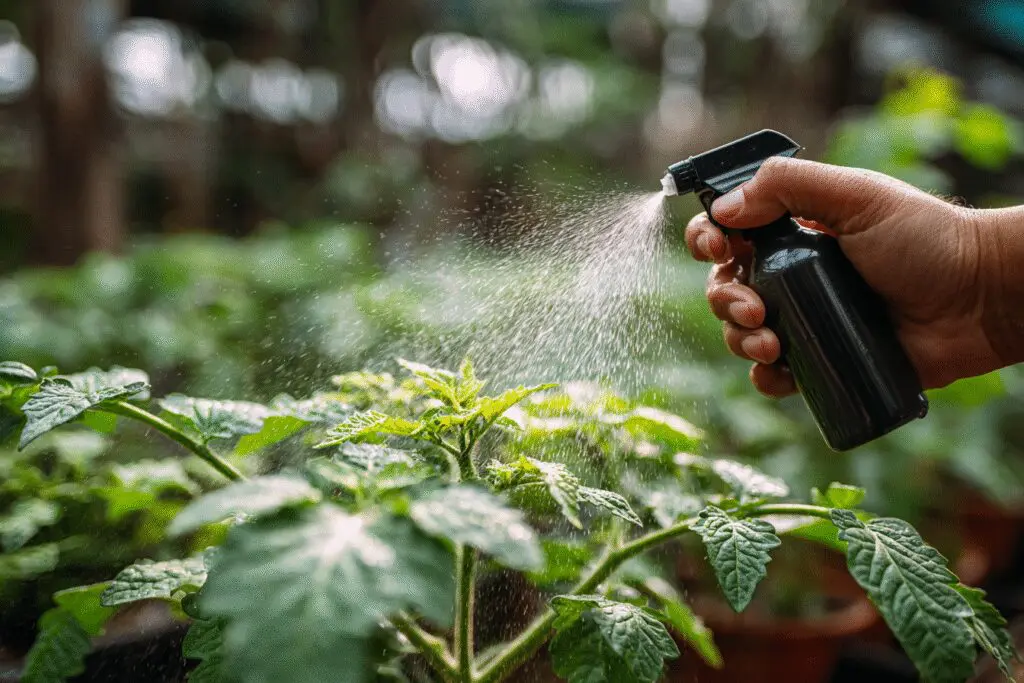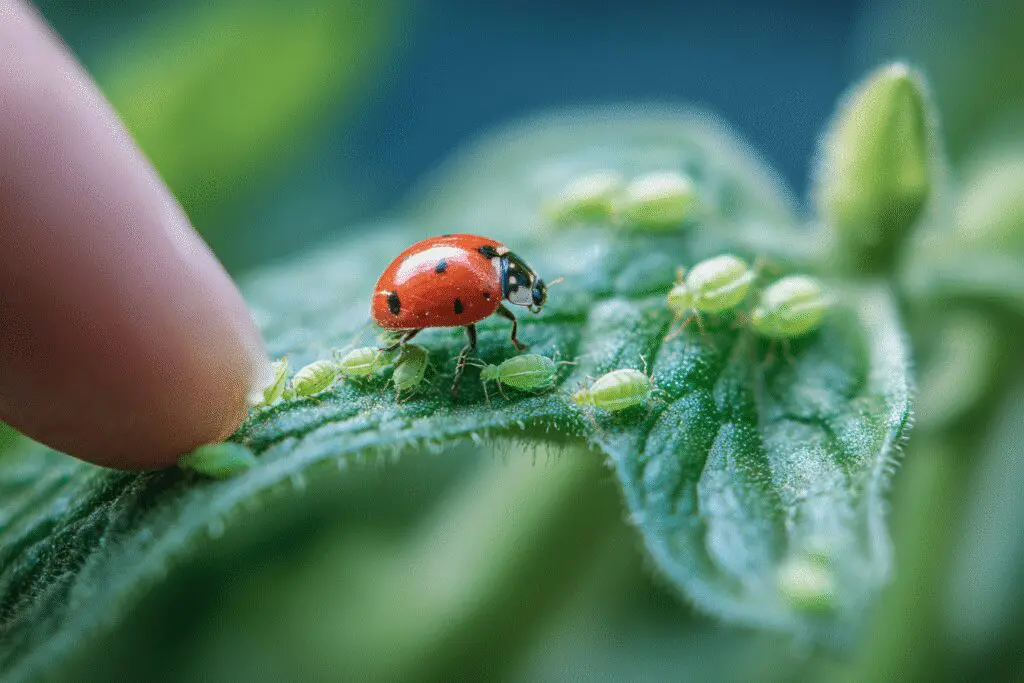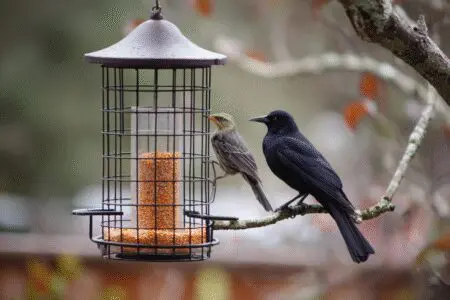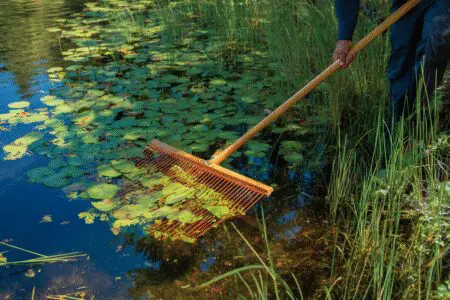Are you looking at your beautiful tomato plants only to find tiny bugs all over them? You are likely dealing with aphids. These small, pear-shaped insects can multiply fast. They can quickly damage your precious tomato crop. It can be very frustrating to see your hard work threatened. If you are asking how to get rid of aphids on tomato plants using safe and natural methods, you have found the right guide. We will explore eight great organic ways to protect your plants and ensure a healthy harvest.
Dealing with an aphid infestation can feel like a big challenge. These pests suck the sap from your plants. This weakens them and can spread disease. Luckily, you do not need to use harsh chemical pesticides. There are many effective organic solutions available. This article will give you a complete plan for gardeners in the USA. It will help you control aphids without harming the environment, your family, or your future tomatoes. We will cover everything from simple water sprays to using helpful insects.
More in Home & Garden Category
How To Get Rid Of German Roaches
How to Get Rid of Black Widow Spiders
Why Do I Have Aphids on My Tomato Plants?
First, it helps to understand why aphids chose your tomato patch. Aphids are drawn to plants that are lush and have a lot of new growth. This is because the new leaves and stems are soft and full of sap, which is their food.
Several things can make your tomato plants extra attractive to aphids. For example, using too much nitrogen fertilizer can cause a lot of leafy growth, creating a feast for them. Also, stressed plants, perhaps from not enough water, can be more vulnerable. Sometimes, it is just bad luck. Aphids can be carried into your garden by the wind or on new plants you bring home. Knowing what brings them in is a good first step in learning how to get rid of aphids on tomato plants.
What Kind of Damage Can Aphids Cause?
Aphids might be small, but a large group of them can cause serious problems for your tomato plants. It is important to act fast when you see them.
First, they feed by piercing the plant’s leaves and stems to suck out the sap. This feeding can cause the leaves to curl, turn yellow, and stunt the plant’s growth. Consequently, your plant may produce fewer tomatoes.
Second, as aphids feed, they excrete a sticky, sweet substance called honeydew. This honeydew can coat the leaves and attract a black, sooty mold. This mold is not only ugly, but it can also block sunlight, which the plant needs to make food.
Finally, aphids are known to transmit plant viruses. As they move from one plant to another, they can spread diseases that can ruin your entire crop. Therefore, getting them under control is vital for the health of your garden.
Method 1: Can I Just Spray Aphids Off with Water?
Yes, one of the easiest and quickest ways to deal with aphids is to use a simple spray of water. This method is surprisingly effective, especially if you catch the infestation early. It is a great first line of defense.
How Does a Water Spray Work?
A strong jet of water physically knocks the aphids off your tomato plants. Aphids are small and have soft bodies. Many of them will be killed by the force of the water or will be unable to climb back onto the plant.
- Use a Spray Nozzle: Attach a spray nozzle to your garden hose. You want a stream that is strong enough to dislodge the bugs but not so strong that it damages the leaves and stems of your tomato plants.
- Spray Everywhere: Be sure to spray the entire plant. Pay special attention to the undersides of leaves, as this is where aphids love to hide. Also, spray the stems and the new growth at the top of the plant.
- Do It in the Morning: It is best to spray your plants in the morning. This gives the leaves plenty of time to dry in the sun. Wet leaves at night can sometimes lead to fungal diseases.
- Repeat as Needed: This is not a one-time fix. You will likely need to spray your plants every few days for a week or two to get the population under control.
This simple water spray is a fantastic, non-toxic starting point.
Method 2: Is Soapy Water an Effective Way for How to Get Rid of Aphids on Tomato Plants?
Soapy water is another excellent organic tool in your fight against aphids. It is a classic remedy that gardeners have used for a very long time. It is safe for most plants when mixed correctly and is very effective at killing aphids on contact.
How Do I Make a Safe Soap Spray for My Tomatoes for How to Get Rid of Aphids on Tomato Plants?
Making a soap spray is very easy. However, it is important to use the right kind of soap.
- Choose the Right Soap: Do not use dish detergents or any soap that has degreasers or bleach. These can harm your plants. Instead, use a pure, mild soap like castile soap or a non-detergent insecticidal soap that you can buy at a garden center.
- The Recipe: Mix one to two teaspoons of mild soap into one gallon of water. Do not make the mixture too strong, as this can burn the plant’s leaves.
- Test It First: Before you spray your entire plant, it is a good idea to test the soap mixture on a small area. Spray one or two leaves and wait a day to see if there is any damage. If the leaves look fine, you can proceed.
How Often Should I Apply the Soap Spray?
You should apply the soap spray directly onto the aphids. Just like with the water spray, make sure to cover all parts of the plant, especially under the leaves. The soap only works when it is wet, so you need to make sure you coat the bugs well. You may need to reapply the spray every four to seven days until the aphids are gone.
Method 3: Will Neem Oil Work for How to Get Rid of Aphids on Tomato Plants?
Neem oil is a powerful, all-natural pesticide that comes from the seeds of the neem tree. It is a fantastic tool for organic gardening because it works in several ways. It is a cornerstone for any serious plan on how to get rid of aphids on tomato plants.
How Do I Use Neem Oil Correctly for How to Get Rid of Aphids on Tomato Plants?
Using neem oil is simple, but you need to follow the directions carefully.
- How It Works: Neem oil is not a poison that kills instantly. Instead, it disrupts the insects’ hormones, making it hard for them to eat, grow, and lay eggs. It also works as a repellent, keeping new aphids away.
- Mix It Properly: You should buy 100% pure, cold-pressed neem oil. You will need to mix it with water and a little bit of mild soap. The soap helps the oil and water mix together. A typical recipe is two teaspoons of neem oil and one teaspoon of mild soap per gallon of water.
- Application: Spray the mixture on all parts of the tomato plant. Again, focus on the undersides of the leaves. It is best to apply neem oil in the evening or on a cloudy day. This is because direct sunlight on wet, oil-covered leaves can sometimes cause them to burn.
- Be Patient: Because neem oil is not an instant killer, it may take a few days to see results. You should reapply it every week or two as a preventive measure.
Method 4: Can I Introduce Beneficial Insects to My Garden?
Yes, one of the best long-term solutions for aphid control is to invite their natural enemies into your garden. This is like creating your own little army to protect your plants. This is a very effective and sustainable method.
What Are the Best Predator Insects for Aphids?
There are several “good bugs” that love to eat aphids.
- Ladybugs: Ladybugs are famous for their appetite for aphids. A single ladybug can eat thousands of aphids in its lifetime. You can buy ladybugs online or at garden stores and release them into your garden.
- Lacewings: The larvae of the lacewing are often called “aphid lions” because they are such ferocious predators of aphids.
- Parasitic Wasps: These tiny wasps do not sting people. Instead, they lay their eggs inside aphids. The wasp larva then eats the aphid from the inside out.
How Do I Attract These Good Bugs to My Garden?
You can buy these insects, but it is even better to attract them naturally.
- Plant Flowers: Ladybugs and other beneficial insects are attracted to plants with small flowers, like dill, cilantro, yarrow, and sweet alyssum. Planting these among your tomatoes can help bring in the good bugs.
- Provide Water: A shallow dish of water with some pebbles in it can give these helpful insects a place to drink.
- Avoid Pesticides: Even organic pesticides can harm beneficial insects. Try to use them only when needed.
Method 5: Does Companion Planting Help Prevent Aphids?
Companion planting is the idea of growing certain plants together to help each other out. Some plants can help repel pests like aphids from your tomatoes. This is a great proactive strategy.
What Plants Should I Grow Near My Tomatoes to Help With How to Get Rid of Aphids on Tomato Plants?
There are several plants that are known to be good companions for tomatoes.
- Trap Crops: Some plants, like nasturtiums, are very attractive to aphids. You can plant them nearby as a “trap crop.” The aphids will go to the nasturtiums instead of your tomatoes. Then you can deal with the aphids on that one plant.
- Repellent Plants: Other plants have strong smells that aphids do not like. These include herbs like chives, garlic, and onions. Planting these around your tomatoes can help keep aphids away. Marigolds are also a classic choice for repelling many garden pests.
Method 6: Can I Remove Aphids By Hand?
If you only have a small number of tomato plants or a very small infestation, you can simply remove the aphids by hand. It is a very direct and effective method.
You can gently squish them with your fingers. Alternatively, you can take a cotton swab dipped in rubbing alcohol and touch it to the aphids to kill them. You can also prune off a heavily infested leaf or stem and drop it into a bucket of soapy water. This is a great way to deal with small problems before they become big ones.
Method 7: Are There Any Kitchen Sprays I Can Make?
Yes, you can make some effective aphid-repellent sprays using ingredients you probably already have in your kitchen. These homemade sprays work by using strong smells to keep aphids away.
How Do I Make a Garlic or Pepper Spray?
These sprays are easy to make.
- Garlic Spray: Mince a few cloves of garlic and let them soak in a quart of water overnight. Strain the garlic out and add a teaspoon of mild soap. Put the mixture in a spray bottle.
- Pepper Spray: Mix one tablespoon of cayenne pepper and a few drops of mild soap into a quart of water. Let it sit for a few hours and then strain it.
With either of these sprays, you should test them on a small part of the plant first. They can be very effective at making your tomato plants taste and smell bad to aphids.
Method 8: How Does Pruning Help in How to Get Rid of Aphids on Tomato Plants?
Pruning, or trimming your tomato plants, can also be a helpful part of your aphid control plan. It works in a couple of ways.
First, as mentioned before, if you see a part of the plant that is heavily covered in aphids, you can simply prune that branch or leaf off. This instantly removes a large number of the pests.
Second, proper pruning improves air circulation around the plant. Aphids often thrive in dense, crowded conditions. By trimming some of the lower leaves and suckers, you open up the plant. This makes it a less inviting home for aphids and also helps prevent fungal diseases. This is a simple but important part of how to get rid of aphids on tomato plants.
Why Is Combining Methods for How to Get Rid of Aphids on Tomato Plants the Best Long-Term Solution?
Finally, the best way to protect your tomatoes is to use a combination of these organic methods. Do not rely on just one solution. A good plan for how to get rid of aphids on tomato plants uses several strategies at once.
For example, you might start by spraying the aphids off with water. Then, you could follow up with a neem oil spray. At the same time, you can plant some marigolds and dill nearby to attract beneficial insects. This multi-layered approach is called Integrated Pest Management (IPM). According to the University of California’s Statewide IPM Program, this approach is the most effective and sustainable way to manage pests. You can learn more on their UC IPM Pest Notes page. By using IPM, you create a garden that is strong, resilient, and much less friendly to aphids.
FAQ – How to Get Rid of Aphids on Tomato Plants

How can beneficial insects be used to control aphids organically in my garden?
Introducing natural predators like ladybugs, lacewings, and parasitic wasps can effectively control aphid numbers. To attract these beneficial insects, plant flowers like dill or yarrow and provide shallow water sources, while avoiding the use of broad-spectrum organic pesticides that may harm them.
How effective is homemade soap or insecticidal spray in managing aphids on tomatoes?
A soap spray made from mild, pure soap mixed with water is effective at killing aphids on contact and safe for plants when used correctly. It should be applied every four to seven days, ensuring thorough coverage, especially under the leaves, until the aphids are eliminated.
Is spraying tomato plants with water an effective method to eliminate aphids?
Yes, spraying a strong jet of water can dislodge aphids from tomato plants and is a safe, immediate method to reduce their population, especially if you catch the infestation early. Repeat spraying every few days can control larger infestations.
What are the main damages caused by aphids to tomato plants?
Aphids feed by piercing the plant’s leaves and stems to suck sap, causing leaves to curl, yellow, and stunt growth, which reduces tomato production. They also excrete honeydew leading to sooty mold and can transmit plant viruses, threatening the overall health of your crop.
Why do aphids tend to infest tomato plants, and how can I prevent this?
Aphids are attracted to lush, tender growth on tomato plants, especially when there is excessive nitrogen fertilizer, stressed plants, or winds carrying them in. To prevent infestations, avoid over-fertilizing with nitrogen, keep plants healthy with proper watering, and be cautious when introducing new plants into your garden.




